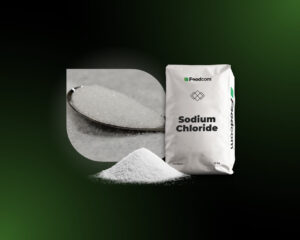After weeks of a dairy triathlon, the buyers have sprinted to get the cheapest offer in categories of powders, fats and cheeses. However, on the finish line, they’ve met the obstacles of increased prices for the fresh quotes.
The situation has been extremely dynamic in recent weeks – we have already established that. Last week, the situation stabilized somewhat. Slightly. It is impossible to summarize the current market situation briefly and in general, so even more than usual (can it be more?) we encourage you to read the details of particular products.
Skimmed Milk Powder
Buyers have begun to confirm prices from two weeks ago. Manufacturers and traders, seeing the interest, quite quickly raised the prices of the products offered. This was met with dissatisfaction among buyers, and those who held back and did not make purchases may soon regret their decision.
Butter
Uncertainty about the decline of the product, as it will be very difficult for most major Dairies participating in Gulfood in Dubai to obtain information and make purchases. The price change was due to typical market conditions. When it jumped from €4 to €4.8 during the week, part of the market closed itself. This only added to the uncertainty in fat prices and the soft adjustment in Butter offered. The rapid growth threatens buyers and leads to stagnation. Model cause-and-effect chain.
Full Cream Milk Powder
Purchases in Europe when warehouses are empty. More interest in exports outside Europe is noted. Dairies producing FFMP are in a very satisfactory condition compared to producers who have to produce and end up with a surplus of Full Cream Milk Powder, which is not the most sought-after product in the European Union as of today.
Gouda/Edam
In recent weeks we have seen a nice rebuilding of the prices in the cheese market. We can only assume that this is related to the upcoming Easter, which is more of a breakfast holiday. So, the market is trying to secure good volumes of fresh cheese for people to buy in stores. Cagliata buyers are still determining the valuation between Mozzarella and Cagliata, but soon we will probably see the interest for the Cagliata.
What else?
Europe
Another Irish milk processor has lowered the price of the product it sells to consumers
The main reason for this decision is, of course, the decline in demand for milk that is being felt around the world. High inflation, in turn, is responsible for this, as is buyers’ reluctance to make purchases in the current situation.
Farmers and processors are concerned about declining retail dairy prices
The beginning of 2023 is marked by price declines for virtually all dairy products. At the same time, their production costs remain high. Some supermarket chains in Poland and Lithuania have started offering dairy products to their customers at significantly lower prices than just a few weeks ago. Farmers and dairy processors are very concerned about how this might affect them.
The number of dairy farms and cows in Sweden is decreasing, but the amount of milk produced is not so much
The latest figures indicate that the number of dairy farms in Sweden has halved with each passing decade over the past 40 years. During the same period, the number of dairy cows fell by 55%. Annual raw milk production has declined by 21%, which of course is not a small drop, but does not seem particularly large given the decline in the number of dairy farms and the number of cows. The Swedish dairy industry really has a cow with these declines.
The Americas
Uruguay’s milk powder exports surged in the second half of January
Uruguay’s main export destinations for this commodity are Algeria and Brazil, and the large volumes exported to the latter contributed to the overall very good January result. The increase in sales to Brazil is evidence that demand for dairy products remains strong in the international market. Perhaps Uruguay is the land of milk and honey… Should we hold some kind of official plebiscite on this issue?
New Mexico is trying to deal with the problem of feral cows
Authorities have agreed to a plan to use helicopters to kill them, which has met with fierce opposition. The 150 or so feral cows have a negative impact on the environment and also endanger tourists, hence the decision to cull them. At the same time, farmers warn that their own animals may become accidental victims. Moreover, the death brought about in this way can be long and painful.
Do you think nothing more surprises you about the cattle trade?
In the United States, two people were sentenced to prison in connection with a Ponzi scheme involving the trade in cattle. They conducted their illegal activities between 2017 and 2019 and collected about $650 million from their victims. The victims were promised profits of 10%-20% in just a few weeks. The scammers were sentenced to six-year prison terms. They were definitely all hat and no cattle.
Asia & Oceania
A2 Milk is experiencing profit growth, but there is no shortage of challenges
One of the main issues the company is currently focusing on is the Chinese market. Infant formula sales in China offer strong profit potential, but the post-pandemic reality remains a challenge, as does the lower birth rate in recent years. Similar trends are expected to continue in the coming years.
Milk from several thousand years ago has been discovered
At an archeological site in Namling County in the city of Xigaze in the Tibet Autonomous Region, scientists have discovered the remains of milk from 3 000 years ago that provide a deeper understanding of the diet of the people living there at that time. What’s particularly impressive is that the site where the milk was found is 4 000 meters above sea level. 3 000 years old, you say? That’s almost as much as that one forgotten milk in every refrigerator.
Cyclone Gabrielle hit the dairy sector in New Zealand hard
Dairy farmers in the worst-affected regions of the country were forced to dump their milk because tankers could not reach their farms. Processors are working directly with farmers to reduce milk losses. Other challenges include milking delays and loss of pasture. The New Zealand government is providing $4 million to help farmers, ranchers and rural communities mobilize and coordinate recovery efforts following the devastating effects of the cyclone. The funds will be used to restore access to power and communication lines, conduct aerial surveys of the situation and support local initiatives.







